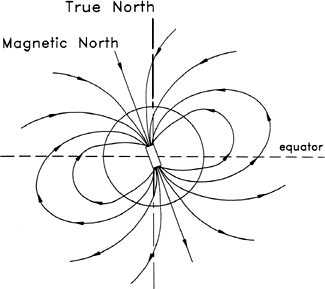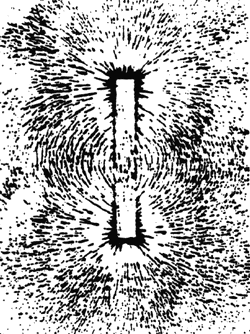
| The Magnetic Sun: What is a Magnetic Field? |
|
Magnetism has been known for thousands of years, though until relatively recently (ca. 1820) the only magnets were naturally occurring magnetic rocks called "lodestones" (magnetite). The word "magnetism" derives from the district of Magnesia in Asia Minor where lodestones were found. These lodestones were observed to attract bits of iron, just like a kitchen magnet which is attracted to your refrigerator door. The space around the magnet is the site of the magnetic field, where the magnetic force is felt by the bit of iron. At each point around the magnet, the magnetic field has both a strength and a direction.
| We are all familiar with magnetic fields, from the magnets on your refrigerator door to the Earth itself. For example, if you have ever used a compass you are using the Earth's magnetic field to find direction. In fact, the Earth can be considered a gigantic magnet. The pattern of the Earth's magnetic field is roughly like one that would result from a short, powerful magnet near the Earth's center. |

|
| Experiments using magnets and iron filings are familiar to many of us. A magnet is placed under a pane of glass or sheet of paper and iron filings are sprinkled over the top (see images below). The magnetic field pushes on the iron filings, forcing them to line up in patterns which curve around the magnet until they point in the same direction as the magnetic field. This allows you to "see" the magnetic field surrounding the magnet. There are no iron filings on the Sun, but we can still "see" the magnetic field outlined by the hot gases in the Sun's corona. | |
 |
 |
|
|